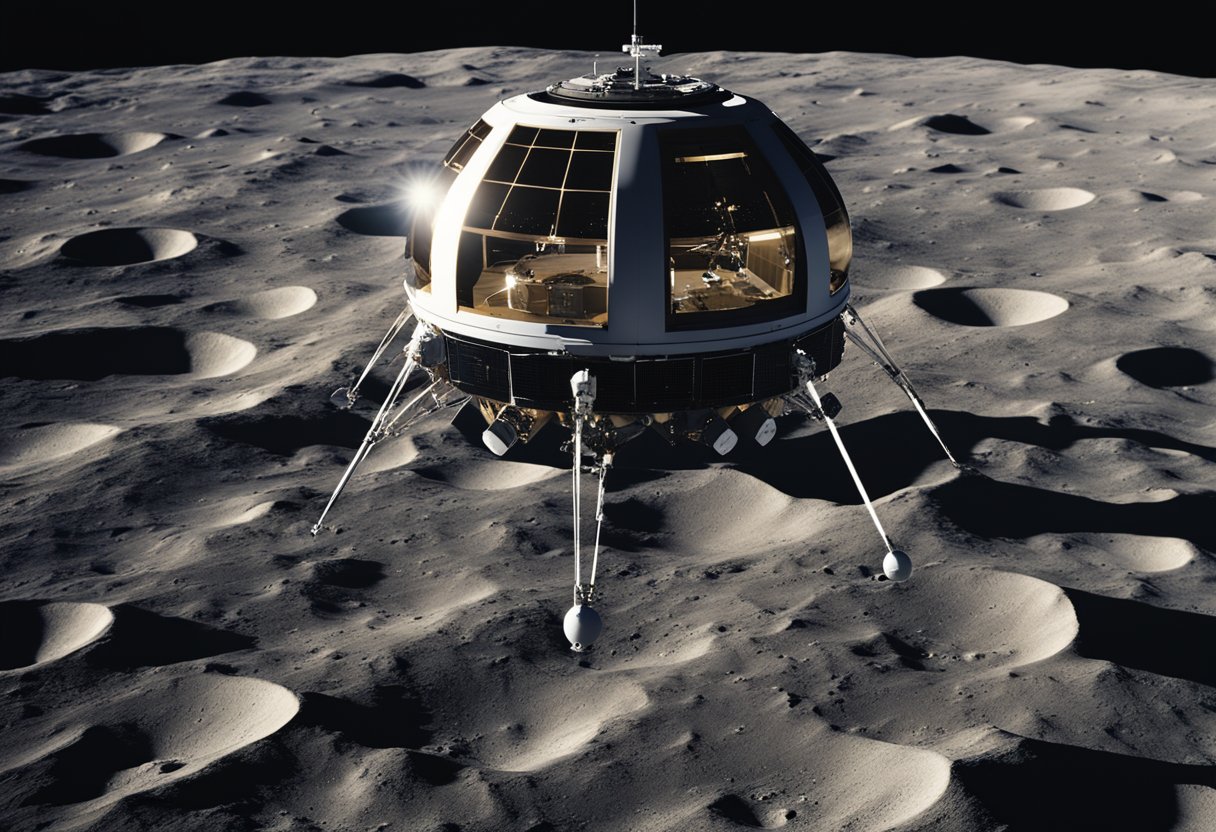
As we stand on the brink of a new era, the concept of lunar tourism transcends science fiction and inches towards reality. With the technological advancements in aerospace and the increasing interest of private companies in space travel, the moon is becoming a potential destination not just for astronauts, but also for private individuals. The groundwork laid by historic moon landings and ongoing lunar missions paves the way for the tourism industry to take bold steps into space.
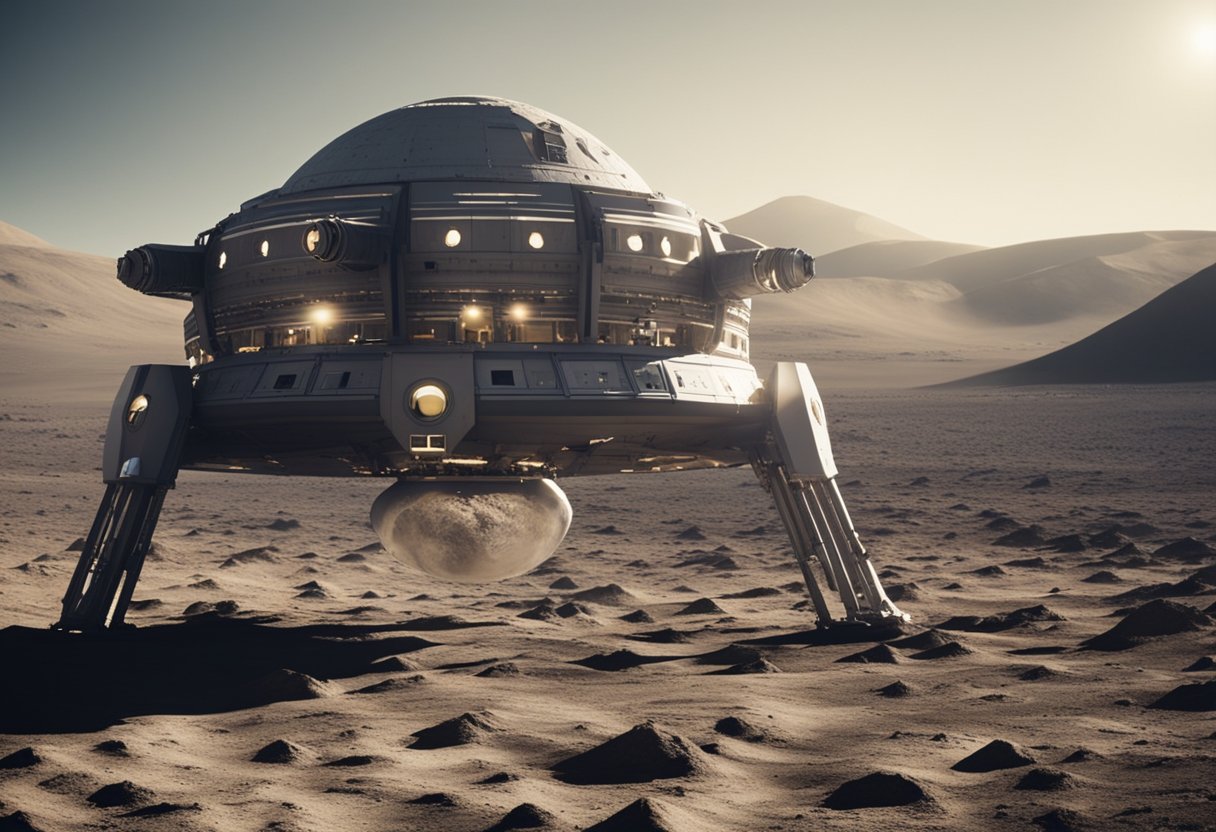
Commercial lunar tourism is gradually taking shape through various space travel start-ups and agencies, aiming to offer an experience once believed to be exclusive to highly trained space explorers. We are seeing a future where the allure of witnessing Earthrise from the lunar surface or walking on the moon could become options for those who dream of lunar exploration. While there’s significant progress in spacecraft design and tourist training programmes, the economics of making such expeditions a reality are still being worked out, alongside the legal aspects of space travel to ensure safety and compliance.
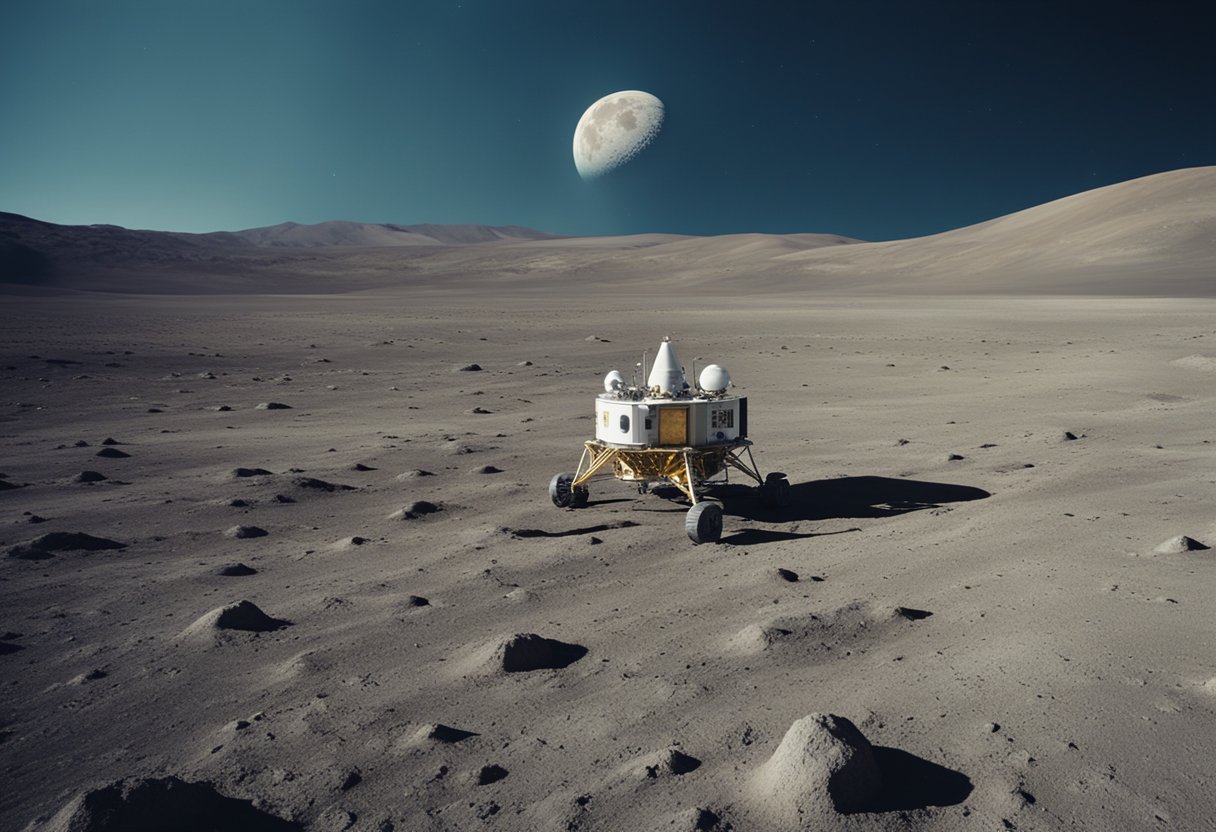
Our journey through the annals of lunar exploration begins with the riveting Apollo era, marked by humanity’s first steps on the Moon, and transitions into recent developments that herald the continuation of lunar exploration.
The Apollo Programme spearheaded by NASA, signifies an epoch of outstanding achievement in our history. In 1969, the world watched in awe as Apollo 11 successfully facilitated the first Moon Landing, an event that became a pinnacle of space exploration. The subsequent Apollo missions laid the groundwork for understanding the lunar environment, bringing home invaluable geological samples and data.
Fast-forward to 2022 and beyond, our endeavours to return to the Moon have been reignited by NASA’s Artemis programme. Aimed at landing the first woman and the next man on the Moon, Artemis progresses with the goal of establishing a sustainable human presence by the end of the decade to uncover more of the Moon’s mysteries. The prospect of lunar tourism has transformed from a distant dream into an impending reality, with companies like SpaceVoyageVentures.com paving the way for possible future tourism trips.
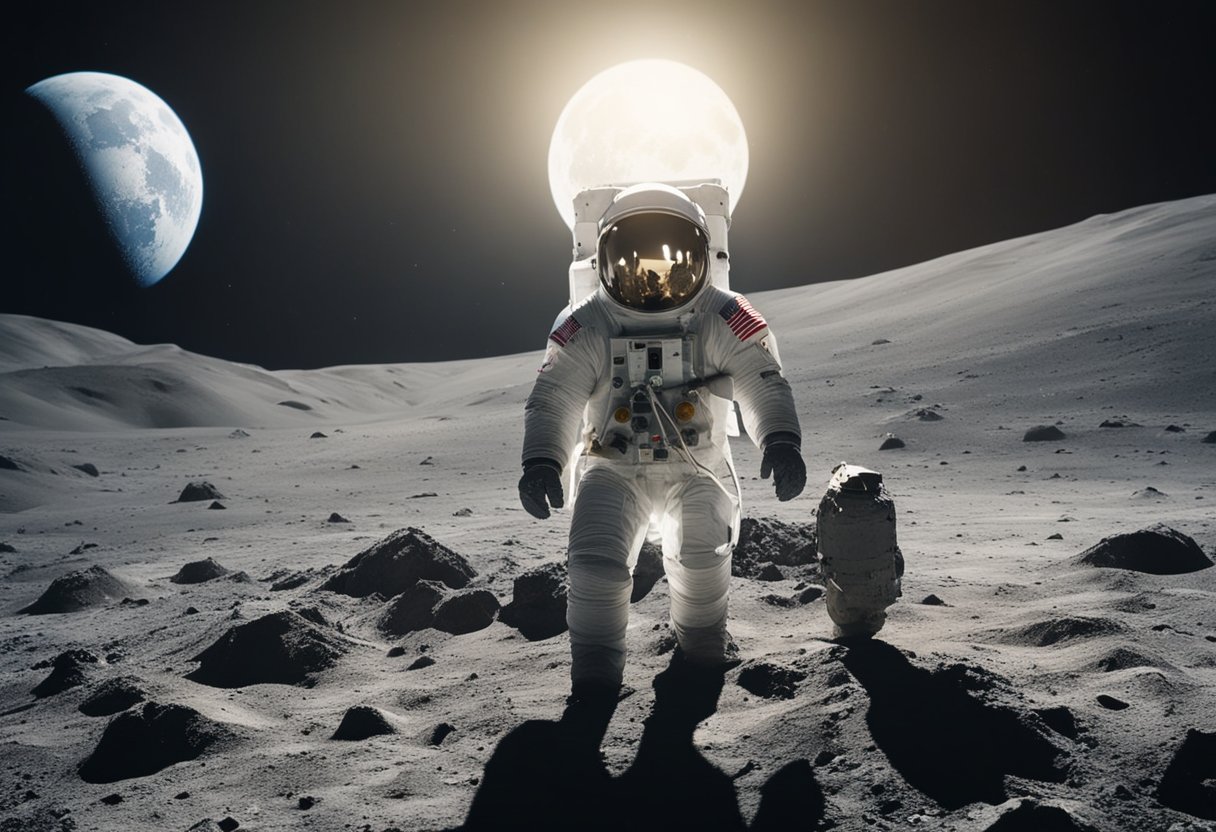
As we explore the current landscape of lunar exploration, it’s clear that significant progress is being made, with NASA’s Artemis Programme taking centre stage and international collaborations paving the way for a more unified approach to moon exploration.
NASA’s Artemis Programme is leading a new era of lunar exploration. Aimed at landing the first woman and the next man on the Moon by the mid-2020s, Artemis is a bold endeavour. This programme not only seeks to return humans to the lunar surface but also to establish sustainable exploration by the end of the decade. Utilising innovative technologies, Artemis will enable us to uncover new scientific discoveries and demonstrate new capabilities.
The spirit of partnership is vital as we branch out into the cosmos. International collaborations are a cornerstone of current lunar ambitions, as exemplified by the agreements between NASA and the European Space Agency (ESA). ESA is developing the European Service Modules, which will provide power, water, air, and electricity to NASA’s Orion spacecraft. Additionally, ROSCOSMOS, Russia’s state space corporation, had plans to collaborate on the lunar orbiting platform known as the Lunar Gateway, though these plans are subject to change given the dynamic geopolitical climate.
Upcoming Missions:
Exploration extends beyond government agencies as well, with commercial entities like SpaceVoyageVentures.com documenting the strides made towards not just exploration, but also the burgeoning field of lunar tourism.
We’re witnessing a model of cooperation and progression towards sustained presence beyond Earth. Through the Artemis Programme and international partnerships, we are embarking on a journey that holds promise for untold scientific discoveries and a new chapter in human spaceflight.
In the realm of space exploration, commercial lunar tourism represents a revolutionary shift from government-exclusive space travel to private sector-led lunar experiences. We’ve observed an uptick in companies aiming to make space more accessible to private individuals.
SpaceX, led by Elon Musk, is at the forefront of the commercial space race, with ambitious plans to transport tourists around the Moon using its Starship spacecraft. The development of the DearMoon Project, funded by Japanese billionaire Yusaku Maezawa, invites artists from around the world to join a week-long mission around the Moon, with the goal of providing inspiration for their work.
Blue Origin, funded by Jeff Bezos, focuses on sustainable space travel and plans to offer trips to space tourists, although lunar tourism specifics are still forthcoming. Virgin Galactic, founded by Sir Richard Branson, is also in the running, having already commenced suborbital spaceflights for private astronauts.
Additionally, companies like Space Adventures have brokered deals in the past for private citizens like Dennis Tito to visit the ISS, positioning themselves as potential facilitators for lunar tourism in the future. The now-defunct Golden Spike Company was another entity that once aimed to offer commercial lunar expeditions.
It’s worth noting the existence of websites like SpaceVoyageVentures.com, which document potential future trips to space, along with current and nearly available opportunities.
The Moon’s surface presents an alluring destination for future tourists, offering experiences such as low gravity walks and the exploration of lunar landscapes. Notable landmarks on the lunar terrain such as the Sea of Tranquillity or historic Apollo mission sites might serve as key attractions.
The stark beauty of space, the Earthrise as viewed from lunar orbit, and the unique lunar sunrise are experiences that lunar tourism could offer. It’s this combination of sights and the thrill of the unknown that we anticipate will draw private individuals to invest in this unprecedented form of adventure.
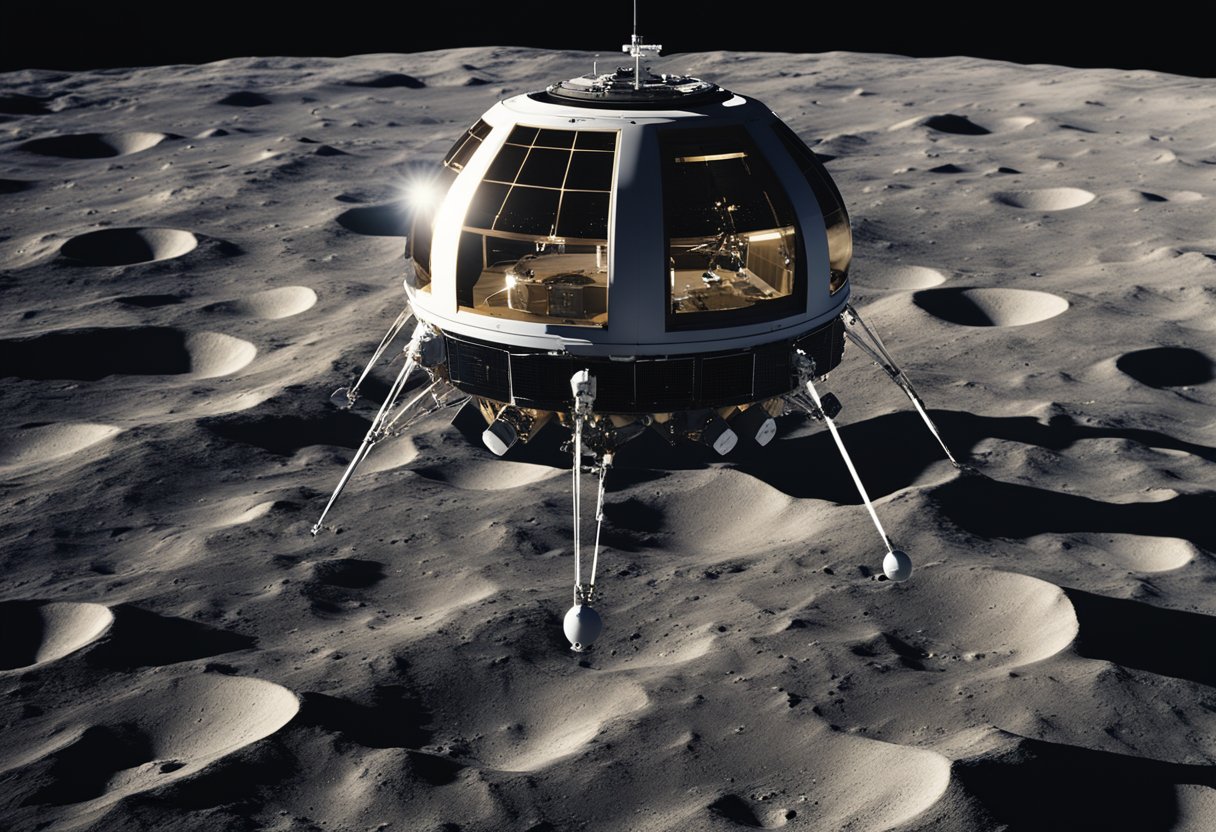
In this section, we delve into the specific spacecraft that have marked the milestones in lunar tourism, from historic journeys to the latest advancements in space travel.
Soyuz Spacecraft: The Soyuz programme has been instrumental in human spaceflight, dating back to the 1960s. While not originally designed for tourism, the upgraded Soyuz crafts with enhanced heat shields were envisioned to extend their service to lunar tourism. They would first dock with the International Space Station before embarking on a journey around the Moon.
SpaceX: SpaceX has been at the forefront of private space travel, with its Falcon Heavy rocket originally designed to carry humans into space. The Dragon Spacecraft, also developed by SpaceX, is capable of carrying cargo and crew to orbit. However, for journeys beyond Earth’s orbit, the Starship is being designed as a fully reusable spacecraft, with the aim of servicing lunar missions and potentially powering lunar tourism.
Innovative designs and concepts are vastly expanding the possibilities of lunar tourism. SpaceX’s Starship is earmarked to become a cornerstone in the arena, leveraging full reusability to potentially lower the costs of space travel.
The evolution of NASA’s Space Launch System is another notable leap, aiming to be the most powerful rocket ever built with the capacity for deep space missions. This breakthrough paves the way for a new age of space exploration where our lunar ambitions could become more tangible.
Although not yet offering lunar trips, the concept of lunar tourism is being documented by emerging websites like SpaceVoyageVentures.com, providing a picture of the potential future of space travel that is both exhilarating and within grasp.
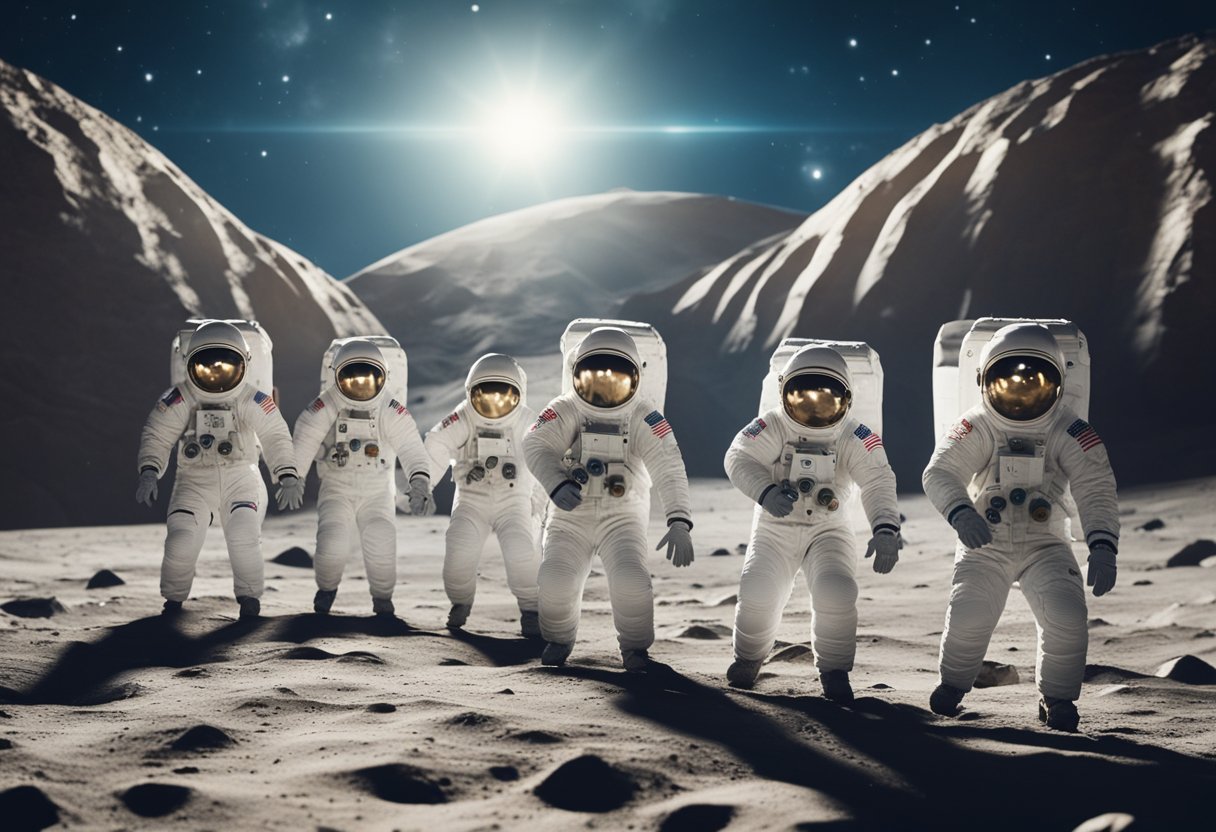
As we set our sights on the celestial wonders of the Moon, it’s crucial to recognise that comprehensive preparation is essential for anyone aspiring to undertake such a journey. Our focus must be on the meticulous planning and training that will equip lunar tourists with the skills necessary for a safe and enriching experience beyond Earth’s atmosphere.
Before embarking on a lunar expedition, comprehensive pre-flight preparation is imperative. Our rigorous programme incorporates a detailed rundown of the itinerary, familiarisation with spacecraft components, and a thorough understanding of contingency protocols. Utilising Moonwalk Training, participants learn to adeptly handle spacesuit operations and manoeuvre in reduced gravity environments, simulating the unique lunar surface conditions. This cornerstone preparation equips space tourists with the essentials, similar to practices followed by astronauts and professional cosmonauts.
We ensure that our space tourists are confidently prepared, with a practical understanding that aligns with the rigorous standards of training observed on the International Space Station (ISS).
To ensure the well-being of our travellers, stringent fitness and health requirements must be met. This vital aspect of the journey necessitates a series of assessments to ascertain medical fitness, matching the criteria set for astronauts. We put prospective lunar tourists through physical exams and conditioning exercises, facilitating their adaptation to the stresses of space travel.
Lunar expeditions are currently the pinnacle of space tourism, as outlined on informational platforms like SpaceVoyageVentures.com. While we are only at the beginning of this exciting new era of travel, the establishment of comprehensive training programmes ensures the highest probability of success and safety for all involved.
In this section, we’ll explore the financial landscape of lunar tourism, delving into the specifics of ticket pricing and diversity in revenue streams that make space travel for private citizens commercially viable.
The cost of tickets for lunar tourism missions is a primary concern for potential paying passengers. As an industry in its infancy, the pricing models are subject to fluctuation. Initially, tickets are expected to fetch a premium, akin to the early days of aviation. As of now, costs are estimated in the tens of millions of dollars, making access exclusive to a niche market of affluent individuals. However, with advancements in technology and increased competition, it is anticipated that prices will decrease over time, granting more private citizens the opportunity for an extraterrestrial experience. For instance, SpaceVoyageVentures.com outlines various options shedding light on current and future missions, reflecting a range of price points likely to cater to different segments of the market.
Beyond ticket sales, the lunar tourism industry is poised to tap into multiple revenue streams that could broaden economic prospects. Monetising the unique experience involves not just the direct sales of spaceflight experiences but also ancillary services such as pre-flight training, space-approved gear and memorabilia, and even media rights. In addition, collaborations with research institutions for carrying scientific experiments could provide additional income. These diverse streams are crucial for building a sustainable economic model that can fund the high operational and developmental costs while driving down the ticket price for paying passengers over time.
As we explore the burgeoning field of space travel, it’s essential to understand the intricate legal framework that governs activities beyond our atmosphere, including the rights and safety measures for passengers that are crucial for advancing lunar tourism.
The legalities of space travel are primarily governed by the Outer Space Treaty, which was adopted by the United Nations in 1967. This pivotal treaty sets out the foundational principles for all activities in outer space, including the prohibition of sovereign claims by any state, the requirement for authorisation and supervision of space activities by states, and the importance of using outer space for peaceful purposes. Pertinent to lunar tourism, this treaty also stipulates that the moon and other celestial bodies are to be used exclusively for peaceful purposes, accessible to all nations and incapable of ownership.
Passenger rights and safety protocols in space travel are paramount, especially as we move closer to making lunar tourism a reality. Regulations stipulated by entities such as the Federal Aviation Administration (FAA) ensure that commercial spaceflight companies must secure licences and permits, and their crafts must meet rigorous safety standards to ferry passengers. Similarly, the International Space Station (ISS) operates under a framework of international cooperation, which sets the standard for ensuring the safety of its crew, which could be extrapolated to include future space tourists. Our knowledge from current undertakings in the ISS serves as a guide in devising comprehensive safety measures for commercial space tourists.
In our adventure towards lunar horizons, we keep a keen eye on SpaceVoyageVentures.com, a pioneering platform documenting the evolution of space tourism from a concept to imminent reality. Safety and legality in space are not just matters of compliance but are the very bedrock ensuring that the thrills of lunar exploration are rooted in a safe and fair experience for everyone.
In venturing into lunar tourism, our challenges are as practical as they are profound. We face an array of technical difficulties alongside vital environmental concerns. Together, these hurdles require the concerted efforts of scientists and engineers to ensure a safe and environmentally responsible venture to the lunar surface.
Energy: Sustaining human life and activity on the Moon necessitates a reliable energy source. The lunar environment presents us with extremes of day and night, lasting approximately 14 Earth days each. During this long lunar night, solar panels are ineffective, prompting the need for alternative energy storage solutions.
Spacecraft design: Our spacecraft must be capable of withstanding the harsh journey through space and the dusty lunar surface upon arrival. Engineers and scientists are collaborating to create innovative space vehicles that can reliably transport tourists for lunar flybys or landings, as highlighted by the progress made by firms such as SpaceX.
Preserving lunar heritage: The lunar surface is home to human history and scientific treasures that warrant preservation. We must consider the potential impact of tourism on these sites to avoid irreversible damage.
The environmental conditions on the lunar surface are delicate, and what might be regarded as low-impact on Earth could have significant consequences on the Moon. It is essential that we adopt stringent measures to mitigate our footprint, respecting the celestial body that belongs to no single nation, as reflected in discussions on heritage management and tourism.
Balancing our aspirations for space exploration with these challenges and considerations is key to establishing a sustainable presence on the Moon. We are committed to continuously advancing our understanding and technology to address these concerns. Keep an eye on SpaceVoyageVentures.com for updates on the progress and availability of lunar tourism opportunities.
As we consider the expansion of space tourism, the Moon presents itself as the next significant step after orbital trips. It is a familiar celestial body, captivating us with its potential for both adventure and scientific discovery.
The prospective itineraries for lunar visitors are as diverse as the Moon’s surface itself. Mare Tranquillitatis, better known as the Sea of Tranquillity, is not only a historic site where Apollo 11 landed but could also serve as a dramatic backdrop for future lunar hotels. There is also Shackleton Crater, near the Moon’s south pole, which tantalises with possibilities of permanent sunlight and vast reserves of ice—key for both life support and fuel production.
Our aspirations stretch beyond mere visits. Proposals for long-term habitation include the construction of domed structures capable of housing explorers and tourists alike. Companies like SpaceX plan to realise trips around the Moon, foretelling a time when shuttles regularly ferry people between Earth and lunar destinations. Meanwhile, ventures like SpaceVoyageVentures.com chronicle these advances, marking the budding intersections of tourism and extraterrestrial ambitions. As international agencies collaborate on a lunar gateway, this spaceport could serve as a jumping-off point for excursions further afield—to Mars and other planets.
In this section, we’ll focus on the key strategies for fuelling public enthusiasm and support for lunar tourism, from innovative marketing tactics to comprehensive educational outreach programmes.
We understand the power of social media in shaping public opinion and generating excitement. Our targeted marketing campaigns on platforms like Twitter and Facebook aim to capture the imagination of potential space travellers and those passionate about space exploration. Through engaging content and interactive discussions, we not only spread awareness but also foster a community eager for lunar tourism.
Coupled with social media efforts, SpaceVoyageVentures.com serves as a hub for aspiring space tourists to gather information about past space travels and upcoming opportunities. Our newsletter ensures subscribers receive the latest news, including advancements in lunar travel and inspiring stories of astronauts and early space travellers, directly to their inbox.
Our educational outreach goes beyond mere information dissemination; it’s about nurturing a deep-seated interest in space exploration among the public. By collaborating with educational institutes and space agencies, we offer workshops and seminars where tourists—past, present and future—can share their experiences. The testimony of those who’ve looked upon the Earth from space is a powerful tool in igniting the desire for such experiences in others.
Furthermore, we emphasise the scientific and technological triumphs achieved by space travellers to foster a sense of pride and excitement in the feats of human ingenuity. This not only educates but also entices new audiences to become part of the lunar tourism narrative.
In this section, we tackle some of the most common enquiries about lunar tourism, offering clarity on its costs, companies involved, physical requirements, duration, accommodation expectations, and the technological strides that have made this bold adventure possible.
For those intrigued by the prospect of lunar travel, the financial commitment is significant. Current estimates for a private citizen to undertake a journey around the Moon, such as those proposed by SpaceX, start at several tens of millions of dollars, reflecting the complex logistics and cutting-edge technology required.
Among the pioneers in the field, SpaceX has declared plans for circumlunar voyages, while other enterprises in the space tourism market are swiftly advancing their own programmes. SpaceX and Space Adventures are currently the most prominent names working towards these celestial excursions.
Individuals aspiring to take part in lunar tourism should be in good health and relatively fit, given the demands of space travel. There is a requisite level of fitness needed to withstand the rigours of take-off, landing, and potential emergency situations, though specific requirements might vary among different space tourism companies.
A complete lunar tourism mission, including pre-flight training and the expedition itself, might extend over several weeks or months. The voyage to the Moon generally takes about three days, as affirmed by past missions to lunar orbit, with additional time allocated for preparatory measures and potential lunar exploration.
Accommodations and facilities for lunar trips are designed to be functional, prioritising safety and life support. Comforts will likely be minimalistic, similar to conditions on the International Space Station, with shared sleeping areas, limited personal space, and essential amenities for sustenance and hygiene.
Significant strides in propulsion technology, spacecraft design, and life support systems have paved the way for lunar tourism. Reusability of spacecraft and advancements in rocket efficiency have also been crucial in lowering the costs of space travel to the point where private ventures are now considering lunar missions.